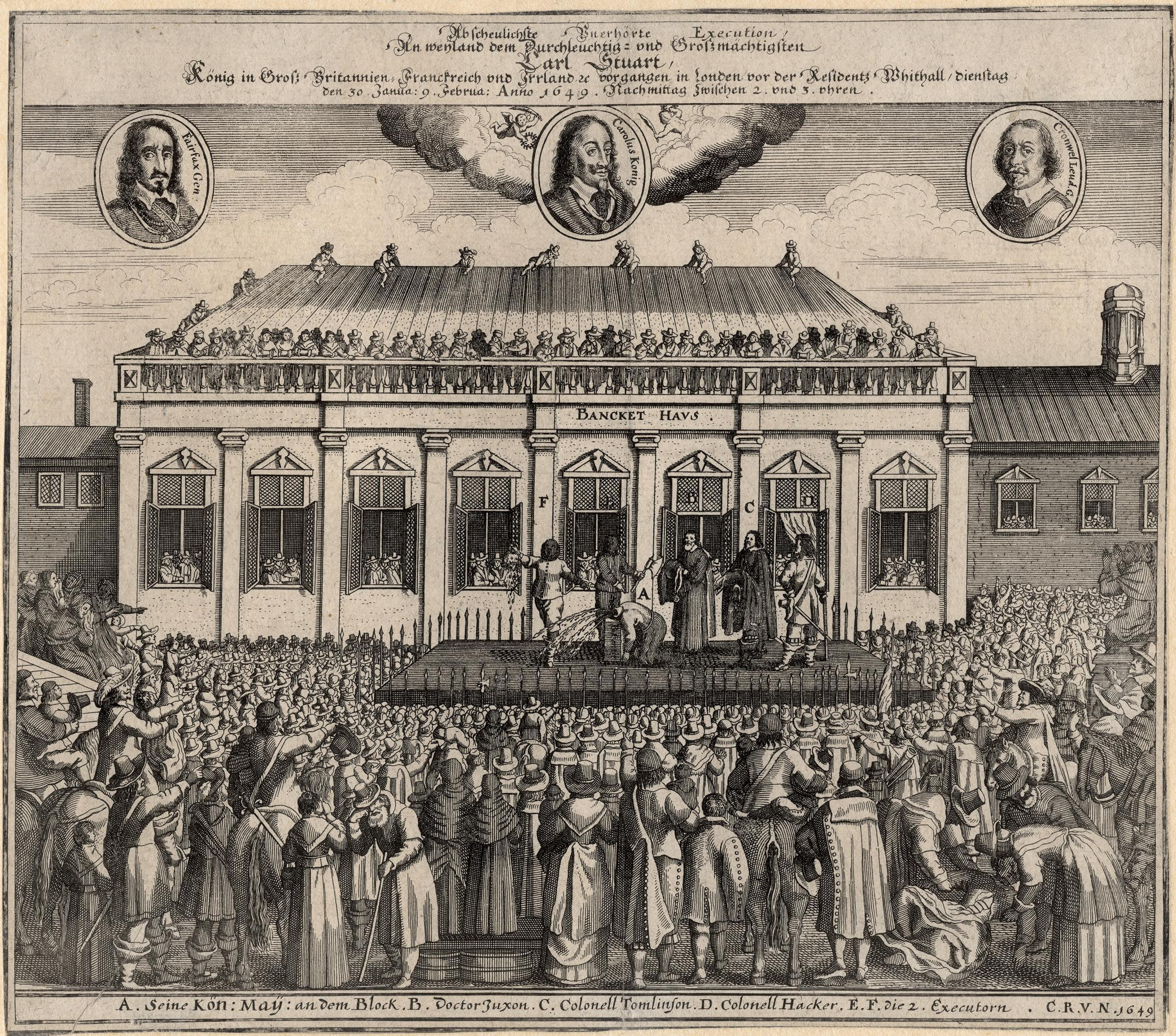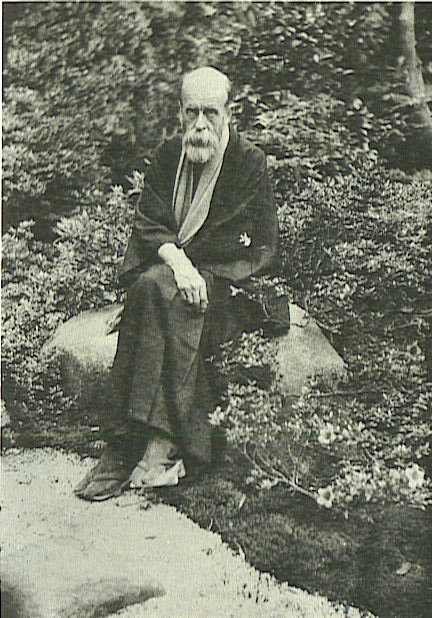|
Konoe Nobuhiro
, Ōzan (応山) as a monk, was a ''kugyō'' or Japanese court noble of the Edo period (1603–1868). He was born the fourth son of Emperor Go-Yōzei. His mother was Empress Dowager Chūka, or Konoe Sakiko by birth. Nobuhiro was adopted by Konoe Nobutada, his maternal uncle, as Nobutada had no legitimate heir. He had his genpuku ceremony in 1606 and was promoted to higher positions successively afterward. He was Udaijin in 1620;Ponsonby-Fane, Richard. (1959). ''The Imperial House of Japan,'' p. 113. and he held the regent position of kampaku from 1623 to 1629. In 1645 he became a monk. After his death, he was buried in his family's tomb at Daitoku-ji. It is obscure who was his wife; but there are accounts that he had three children. Hisatsugu was his son and heir. Another son became a priest at Kajū-ji ( 勧修寺) and was titled Kanshun (寛俊). A daughter of his was a consort of Tokugawa Mitsukuni, second head of the Mito Domain. Family Parents *Father: Emperor Go-Yōzei ( ... [...More Info...] [...Related Items...] OR: [Wikipedia] [Google] [Baidu] |
Kugyō
is the collective term for the very few most powerful men attached to the court of the Emperor of Japan in pre- Meiji eras. The term generally referred to the and court officials and denoted a court rank between First Rank and Third Rank under the ''Ritsuryō'' system, as opposed to the lower court nobility, thus being the collective term for the upper court nobility. However, later on some holders of the Fourth Rank were also included. In 1869, following the Meiji Restoration, the court nobility and daimyo were merged into a new peerage, the ''kazoku''. Overview The ''kugyō'' generally refers to two groups of court officials: * the ''Kō'' (公), comprising the Chancellor of the Realm, the Minister of the Left, and the Minister of the Right; and * the ''Kei'' (卿), comprising the Major Counsellor, the Middle Counsellor, and the Associate Counselors, who held the court rank of Third Rank or higher. History The ''kugyō'' originated from the Three Lords and Nin ... [...More Info...] [...Related Items...] OR: [Wikipedia] [Google] [Baidu] |
Fujiwara Clan
was a powerful family of imperial regents in Japan, descending from the Nakatomi clan and, as legend held, through them their ancestral god Ame-no-Koyane. The Fujiwara prospered since the ancient times and dominated the imperial court until the Meiji Restoration in 1868. They held the title of Ason. The abbreviated form is . The 8th century clan history ''Tōshi Kaden'' (藤氏家伝) states the following at the biography of the clan's patriarch, Fujiwara no Kamatari (614–669): "Kamatari, the Inner Palace Minister who was also called ‘Chūrō'',''’ was a man of the Takechi district of Yamato Province. His forebears descended from Ame no Koyane no Mikoto; for generations they had administered the rites for Heaven and Earth, harmonizing the space between men and the gods. Therefore, it was ordered their clan was to be called Ōnakatomi" The clan originated when the founder, Nakatomi no Kamatari (614–669) of the Nakatomi clan, was rewarded by Emperor Tenji with the honori ... [...More Info...] [...Related Items...] OR: [Wikipedia] [Google] [Baidu] |
1649 Deaths
Events January–March * January 4 – In England, the Rump Parliament passes an ordinance to set up a High Court of Justice, to try Charles I for high treason. * January 17 – The Second Ormonde Peace concludes an alliance between the Irish Royalists and the Irish Confederates during the War of the Three Kingdoms. Later in the year the alliance is decisively defeated during the Cromwellian conquest of Ireland. * January 20 – Charles I of England goes on trial, for treason and other "high crimes". * January 27 – King Charles I of England, Scotland and Ireland is found guilty of high treason in a public session. He is beheaded three days later, outside the Banquet Hall in the Palace of Whitehall, London. * January 29 – Serfdom in Russia begins legally as the Sobornoye Ulozheniye (, "Code of Law") is signed by members of the Zemsky Sobor, the parliament of the estates of the realm in the Tsardom of Russia. Slaves and free peasants are con ... [...More Info...] [...Related Items...] OR: [Wikipedia] [Google] [Baidu] |
1599 Births
__NOTOC__ Events January–June * January 8 – The Jesuit educational plan, known as the ''Ratio Studiorum The ''Ratio atque Institutio Studiorum Societatis Iesu'' (''Method and System of the Studies of the Society of Jesus''), often abbreviated as ''Ratio Studiorum'' (Latin: ''Plan of Studies''), was a document that standardized the globally influen ...'', is issued. * March 12 – Robert Devereux, 2nd Earl of Essex, is appointed Lord Lieutenant of Ireland, by Queen Elizabeth I of England. * April 23 – The Earl of Essex arrives in Dublin at the head of 16,000 troops, the largest army ever seen in Ireland. * May 16 – The Kalmar Bloodbath (1599), Kalmar Bloodbath takes place in Kalmar, Sweden. * May 29 – Essex takes Cahir Castle, supposedly the strongest in Ireland, after a short Siege of Cahir Castle, siege. * June 20 – The Synod of Diamper is convened. July–December * July – Second Dutch Expedition to Indonesia: A Dutch fleet returns to Amsterdam, ca ... [...More Info...] [...Related Items...] OR: [Wikipedia] [Google] [Baidu] |
Richard Ponsonby-Fane
Richard Arthur Brabazon Ponsonby-Fane (8 January 1878 – 10 December 1937) was a British academic, author, specialist of Shinto and Japanologist. Early years Richard Arthur Brabazon Ponsonby was born at Gravesend on the south bank of the Thames in Kent, England to John Henry and Florence Ponsonby. His boyhood was spent in the family home in London and at the Somerset country home, Brympton d'Evercy, of his grandfather, Spencer Ponsonby-Fane."A Biographical sketch of Dr. R. Ponsonby-Fane," ''Studies in Shinto and Shrines,'' p. 517. Ponsonby was educated at Harrow School. He added "Fane" to his own name when he inherited Brympton d'Evercy in 1916 after the deaths of both his grandfather and father. Career In 1896, Ponsonby traveled to Cape Town to serve as Private Secretary to the Governor of the British Cape Colony.Ponsonby-Fane, p. 518. For the next two decades, his career in the British Empire's colonial governments spanned the globe. He worked closely with a number of c ... [...More Info...] [...Related Items...] OR: [Wikipedia] [Google] [Baidu] |
Hokke-ji
, is a Buddhist temple in the city of Nara, Japan. Hokke-ji was built by Empress Kōmyō in 745, originally as a nunnery temple on the grounds where her father Fujiwara no Fuhito's mansion stood. According to records kept by the temple, the initial construction went on until around 782. It once had a large complex with several halls, gates, and two pagodas. Hokke-ji was heavily damaged in the fierce Siege of Nara in 1180. The complex was restored in the 12th and 13th centuries, but was again affected by civil conflicts during the Sengoku period. The current main hall, bell tower and the south gate are reconstructions of the 16th century, sponsored by Toyotomi Hideyori and his mother, Lady Yodo. The temple's main worship statue is the wooden 11-faced Kannon, a National Treasure. The temple houses an ancient bath building, originally built by Empress Kōmyō, which she opened to the public. See also * For an explanation of terms concerning Japanese Buddhism, Japanese Bud ... [...More Info...] [...Related Items...] OR: [Wikipedia] [Google] [Baidu] |
Mito Domain
was a Japanese domain of the Edo period. It was associated with Hitachi Province in modern-day Ibaraki Prefecture."Hitachi Province" at JapaneseCastleExplorer.com retrieved 2013-5-15. In the , Mito was a and abstraction based on periodic surveys and projected agricultural yields. In ot ... [...More Info...] [...Related Items...] OR: [Wikipedia] [Google] [Baidu] |
Tokugawa Mitsukuni
, also known as , was a Japanese daimyo who was known for his influence in the politics of the early Edo period. He was the third son of Tokugawa Yorifusa (who in turn was the eleventh son of Tokugawa Ieyasu) and succeeded him, becoming the second daimyo of the Mito Domain. Biography Tokugawa Mitsukuni was born on July 11, 1628, in Mito Domain, Hitachi Province as the third son of Tokugawa Yorifusa, the first daimyo of Mito Domain. His father was the eleventh son of Tokugawa Ieyasu, the founder and first shogun of the Tokugawa shogunate. At the age of six, his elder brother Yorishige became valetudinarian, and Mitsukuni was chosen to succeed his father. At the age of nine, he underwent ''genpuku'' (coming-of-age ceremony). He was responsible for assembling the Mitogaku scholars to compile a huge Japanese history, ''Dai Nihonshi''. In it, Japan was depicted as a nation under the Emperor, analogous to that in Chinese dynasties. This helped the rise of nationalism in the late shogu ... [...More Info...] [...Related Items...] OR: [Wikipedia] [Google] [Baidu] |
Kajū-ji
, also sometimes spelled "Kwajū-ji"Ponsonby-Fane, Richard. (1956). ''Kyoto: The Old Capital of Japan, 794-1869'', p. 115. or "Kanshu-ji, is a Shingon Buddhist temple in Yamashina-ku, Kyoto, Japan.Kyoto Prefectural Government Tourism Division Kajū-ji. History A temple has existed on this site from as early as 900 AD.Japanese Garden Research Network Kajū-ji./ref> Kajū-ji, known familiarly as "Kikki-san," was founded by Emperor Daigo. This site is said to have been chosen because the mother of the emperor had lived a significant part of her life in this place; and after her death, the temple was established in her memory. The temple was destroyed in 1470 during the Onin War and then later restored by the Tokugawa family and the Imperial Household. Successive head priests have been drawn directly from the Imperial family. Mito Mitsukuni (popularly known as Mito Komon) is said to have donated the stone lantern in front of the ''Shoin''. Monzeki Japanese Buddhist priests of ar ... [...More Info...] [...Related Items...] OR: [Wikipedia] [Google] [Baidu] |
Edo Period
The or is the period between 1603 and 1867 in the history of Japan, when Japan was under the rule of the Tokugawa shogunate and the country's 300 regional '' daimyo''. Emerging from the chaos of the Sengoku period, the Edo period was characterized by economic growth, strict social order, isolationist foreign policies, a stable population, perpetual peace, and popular enjoyment of arts and culture. The period derives its name from Edo (now Tokyo), where on March 24, 1603, the shogunate was officially established by Tokugawa Ieyasu. The period came to an end with the Meiji Restoration and the Boshin War, which restored imperial rule to Japan. Consolidation of the shogunate The Edo period or Tokugawa period is the period between 1603 and 1867 in the history of Japan, when Japan was under the rule of the Tokugawa shogunate and the country's regional '' daimyo''. A revolution took place from the time of the Kamakura shogunate, which existed with the Tennō's court, to the Tok ... [...More Info...] [...Related Items...] OR: [Wikipedia] [Google] [Baidu] |
.jpg)





